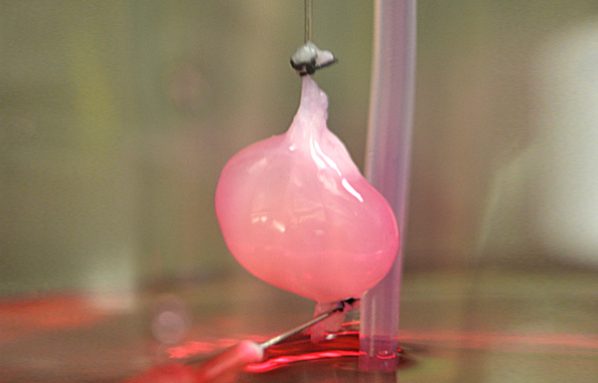New life for a used organ
Scientists transplant a rebuilt kidney into a rat

Scientists at Harvard University have recycled an organ — in a rat.
The researchers removed a kidney from a dead rat and stripped off all of the organ’s old living cells. This left behind only the scaffolding tissue. This framework contains molecules called proteins that can support the growth of new cells. The scientists then seeded the scaffold with new kidney cells and let them multiply. Later, the now refurbished kidney was transplanted into a living rat. The rebuilt organ wasn’t perfect. It did, however, show signs of working like a kidney should.
“It’s really beautiful work,” Edward Ross told Science News. Ross is a kidney researcher at the University of Florida in Gainesville. He did not work on the new study.
This regrown kidney is an example of a bioengineering project. Researchers in this field use knowledge of living things to grow or improve tissues that can aid human health. If researchers can figure out how to use kidneys that might otherwise be discarded to rebuild newly functioning ones, these recycled organs may help people whose own kidneys have failed.
Kidneys are bean-shaped organs that act like janitors in the body. They clean the blood by removing waste and extra water. Every day, an adult’s kidneys filter enough blood to fill a bathtub half full. Along the way, they produce eight cups (nearly 2 liters) of urine from that waste and water. When a person’s kidneys fail, all of that waste stays in the body. Such patients can quickly become very sick and die (unless they are regularly hooked up to a machine that filters their blood, in a process called dialysis).
At any given time, about 100,000 people in the United States are waiting for a replacement kidney. But healthy donated kidneys are difficult to get. Either a living person must donate one, or a kidney must be removed from someone who just died (and earlier had agreed to donate any healthy organ). In either case, people receiving new kidneys face the risk that their bodies will reject the donated ones.
Bioengineering may offer another option. Harald Ott’s team at Harvard started with a “used” kidney. Then they used chemical detergents and water to strip away the cells that made up the kidney’s blood vessels and other living tissues. That left a scaffolding structure called the extracellular matrix. This physically supports the kidney’s cells and includes proteins that transmit chemical signals to guide cell growth.
The scientists added kidney cells from rats and blood vessel cells from people to the matrix. These cells attached themselves and began to multiply. Before long, they formed new kidney tissue within the matrix.
The scientists placed this renewed kidney into another rat. There it produced a small amount of urine. This experiment shows that the lab-grown kidney can do at least some of the work performed by a healthy kidney.
The results are a promising first step toward helping people with serious kidney problems.
“This is still very early, but they’ve come a long way,” Ross told Science News.
Power Words
kidney Each of a pair of organs in mammals that filters blood and produces urine.
dialysis The removal of waste from blood by a machine as a substitute for the normal function of a kidney.
bioengineering The application of technology for the beneficial manipulation of living things.
protein Compounds that are an essential part of all living organisms. Proteins do the work inside a cell. They may be parts of body tissues such as muscle, hair and collagen. Proteins may also be enzymes and antibodies.







